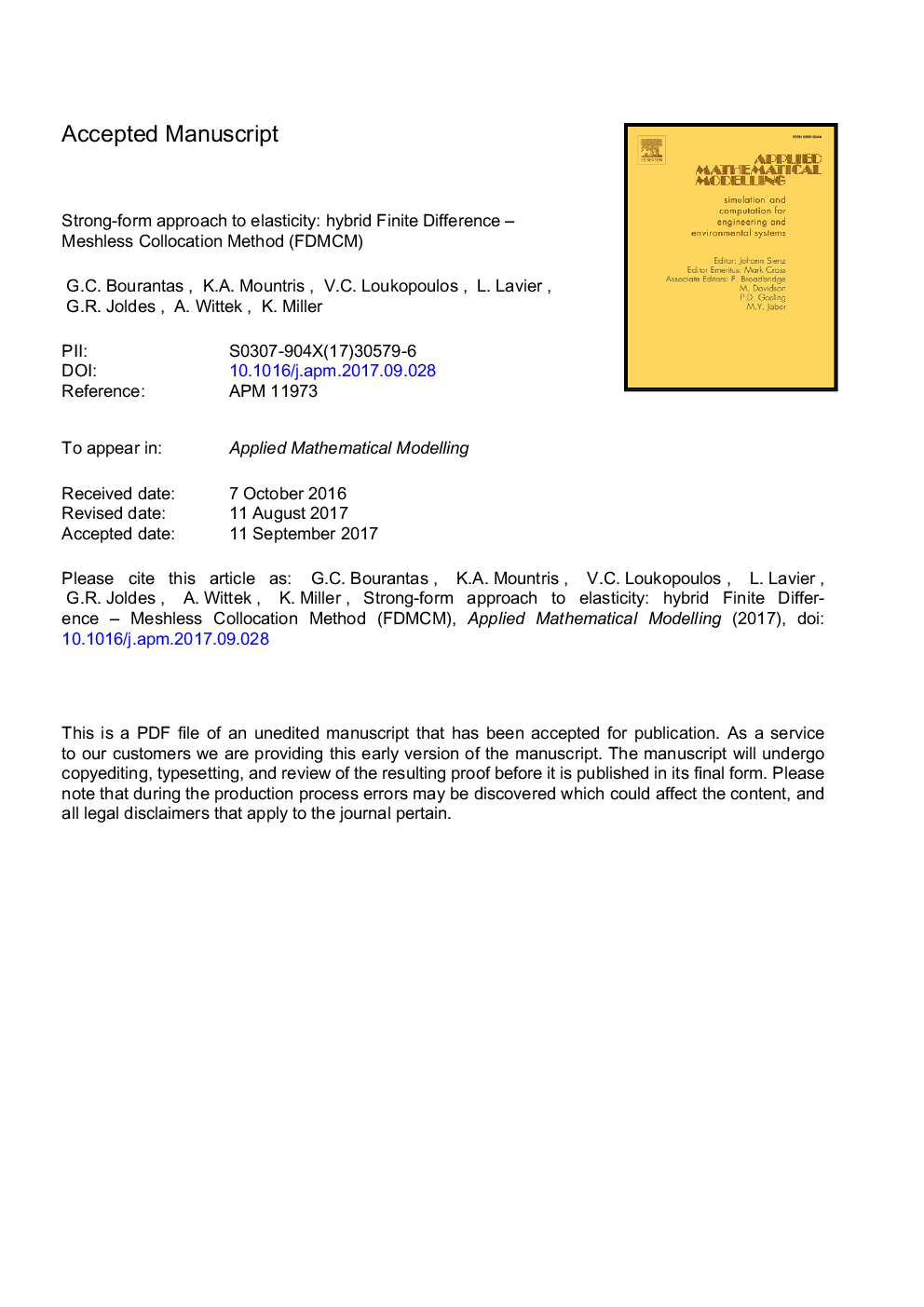| Article ID | Journal | Published Year | Pages | File Type |
|---|---|---|---|---|
| 8051856 | Applied Mathematical Modelling | 2018 | 55 Pages |
Abstract
We propose a numerical method that combines the finite difference (FD) and strong form (collocation) meshless method (MM) for solving linear elasticity equations. We call this new method FDMCM. The FDMCM scheme uses a uniform Cartesian grid embedded in complex geometries and applies both methods to calculate spatial derivatives. The spatial domain is represented by a set of nodes categorized as (i) boundary and near boundary nodes, and (ii) interior nodes. For boundary and near boundary nodes, where the finite difference stencil cannot be defined, the Discretization Corrected Particle Strength Exchange (DC PSE) scheme is used for derivative evaluation, while for interior nodes standard second order finite differences are used. FDMCM method combines the advantages of both FD and DC PSE methods. It supports a fast and simple generation of grids and provides convergence rates comparable to weak formulations. We demonstrate the appropriateness and robustness of the proposed scheme through various benchmark problems in 2D and 3D. Numerical results show good accuracy and h-convergence properties. The ease of computational grid generation makes the method particularly suited for problems where geometries are very complicated and known only imperfectly from images, frequently occurring in e.g. geomechanics and patient-specific biomechanics, where the proposed FDMCM method, after its extension to non-linear regime, appears to be a promising alternative to the traditional weak form-based numerical schemes used in the field.
Related Topics
Physical Sciences and Engineering
Engineering
Computational Mechanics
Authors
G.C. Bourantas, K.A. Mountris, V.C. Loukopoulos, L. Lavier, G.R. Joldes, A. Wittek, K. Miller,
